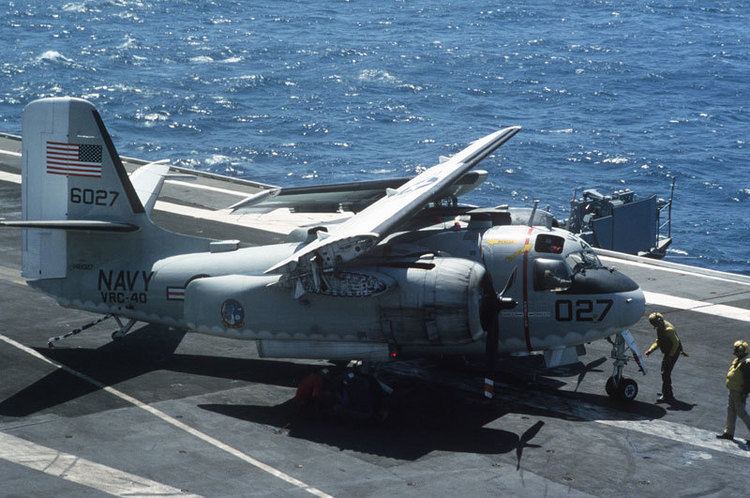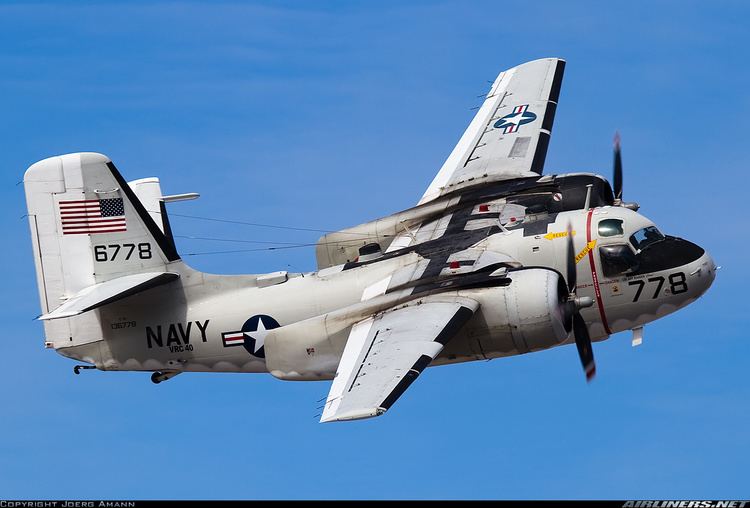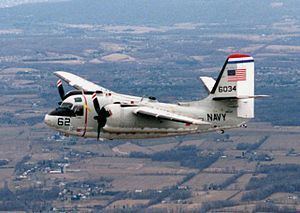Top speed 462 km/h Wingspan 21 m Weight 8,504 kg First flight December 4, 1952 | Range 2,092 km Length 13 m Engine type Wright R-1820 Cyclone | |
 | ||
Grumman c 1 trader at the fresno airshow
The Grumman C-1 Trader is a carrier onboard delivery (COD) variant of the Grumman S-2 Tracker. It was replaced by a similar version of the Northrop Grumman E-2 Hawkeye, the Grumman C-2 Greyhound.
Contents
- Grumman c 1 trader at the fresno airshow
- Design and development
- Operational history
- Variants
- Operators
- Surviving aircraft
- Specifications
- References

Design and development

The C-1 Trader grew out of a need by the United States Navy for a new anti-submarine airplane. In response to this Grumman began development on a prototype twin-engine, high-wing aircraft which it designated the G-89. In 1952 the Navy designated this aircraft the XS2F-1 and flew it for the first time on December 4 that year. During the rest of the 1950s three major variants emerged, the C-1 Trader being one of them. The C-1 (originally the TF-1) was outfitted to carry nine passengers or 3,500 pounds (1,600 kg) of cargo and first flew in January 1955.
Operational history

Throughout the 1960s and 1970s the C-1 Trader carried mail and supplies to aircraft carriers on station in the Pacific Ocean during the Vietnam War and also served as a trainer for all-weather carrier operations. Over its production life 87 C-1 Traders were built, of which four were converted into EC-1A Tracer electronic countermeasures aircraft. The last C-1 was retired from USN service in 1988; it was the second-to-last radial-engine aircraft in U.S military service (The last C-131 Wasn't retired until 1990). As of 2010, approximately ten were still airworthy in civil hands, operating as warbirds.

In 1956 the U.S. Marine Corps Test Unit Number 1 (MCTU #1) tested the concept of using the TF-1 variant as a vehicle for inserting reconnaissance teams behind enemy lines. “On 9 July 1956 MCTU Recon Marines became the first to parachute from a TF-1. Less than three weeks later, four recon parachutists launched from the USS Bennington, which was 70 miles at sea, and jumped on a desert drop zone near El Centro California, some 100 miles inland. For the first time in Marine Corp and Naval Aviation history, the technique of introducing recon personnel off a carrier sea base to an inland objective had successfully been tested.”

In August 2010, Brazilian Naval Aviation announced that it will buy and modernize eight C-1 airframes to serve in carrier onboard delivery (COD) and aerial refueling roles for use on its aircraft carrier São Paulo.
In 2011 contract was signed with Marsh Aviation to convert four ex-US Navy C-1A Trader airframes into KC-2 Turbo Traders. The first KC-2 prototype flight is expected for November 2017 and the delivery of the first operational aircraft is scheduled for December 2018.
Variants
Operators
Surviving aircraft
Specifications
General characteristics
Performance
